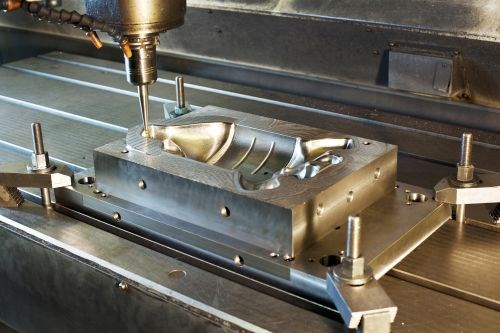Facing Reality
MMT columnist Ryan Pohl has discussed everything from finding potentially good employees to practical training methods to educational philosophies, which all lead to the question: Have you started yet?

Have you started building your talent acquisition, development and management system yet? If the answer is ‘yes’ then keep up the good work. If the answer is ‘no’ then perhaps a review of the skilled labor shortage data will spur you into action.
According to the United Stated Bureau of Labor Statistics 44 percent of the workforce in the United States is 47 years old and older, which means that the vast majority is at or near retirement age. If the demographics were balanced properly, no segment of the population would represent more than 33 to 36 percent of the available workforce. However, as it stands, we are facing an approximate 8.5 million person shortage—and that’s just to replace the people currently working.
This number is across all occupations, not just advanced manufacturing. Actually within advanced manufacturing the challenge is even greater. According to a recent survey by the Manufacturing Institute, 74 percent of manufacturers is already reporting difficulty in business growth due to a lack of skilled labor. This is by far the highest of any other occupation.
Just one of these statistics would be reason enough to act. Overcoming each of these problems individually would be a daunting task, but combined it could be overwhelming. How about adding a third variable? This one is harder to quantify, but you do not have to work in this trade very long to know that it exists. I am referring to the negative perception of working with your hands.
In America, we seem to have forgotten where wealth comes from. We have idealized the “white collar” jobs and created a system that pressures the “best and the brightest” young people to pursue a college education because anything less would be beneath them. High school graduates have been pushed hard to go to college, whether it is the best thing for them or not. Or, like Mike Rowe from Dirty Jobs says it, “We are lending money we don’t have to kids who can’t pay it back to train them for jobs that no longer exist. That’s nuts.” This has become the modus operandi of our culture.
So like Mike Rowe correctly asks at his website: What about the skilled trades? There are plenty of reasons to get into the trades, now more than ever as a matter of fact. It is time for each individual company to make their own efforts to contribute to solve the problem. We all must work on this together. It is not an insurmountable task if we all have a plan.
Related Content
-
From Injection Mold Venting to Runnerless Micro Molds: MMT's Top-Viewed June Content
The MoldMaking Technology team has compiled a list of the top-viewed June content based on analytics. This month, we covered an array of topics including injection mold venting, business strategies and runnerless micro molds. Take a look at what you might have missed!
-
ICYMI, MMT Chats: 30 Under 30 Honoree, Plastics Engineering TA Teaches Value of Learning and Producing Not Perfection
MoldMaking Technology Editorial Director Christina Fuges brings on UMass Lowell Plastics Engineering Teaching Assistant Michael Shone as a guest for this MMT Chat to discuss moldmaking through the lens of academia. This episode is brought to you by ISCAR with New Ideas for Machining Intelligently.
-
The Role of Social Media in Manufacturing
Charles Daniels CFO of Wepco Plastics shares insights on the role of social media in manufacturing, how to improve the “business” side of a small mold shop and continually developing culture.
.png;maxWidth=970;quality=90)






.jpg;maxWidth=300;quality=90)
.png;maxWidth=300;quality=90)

_300x250 1.png;maxWidth=300;quality=90)




